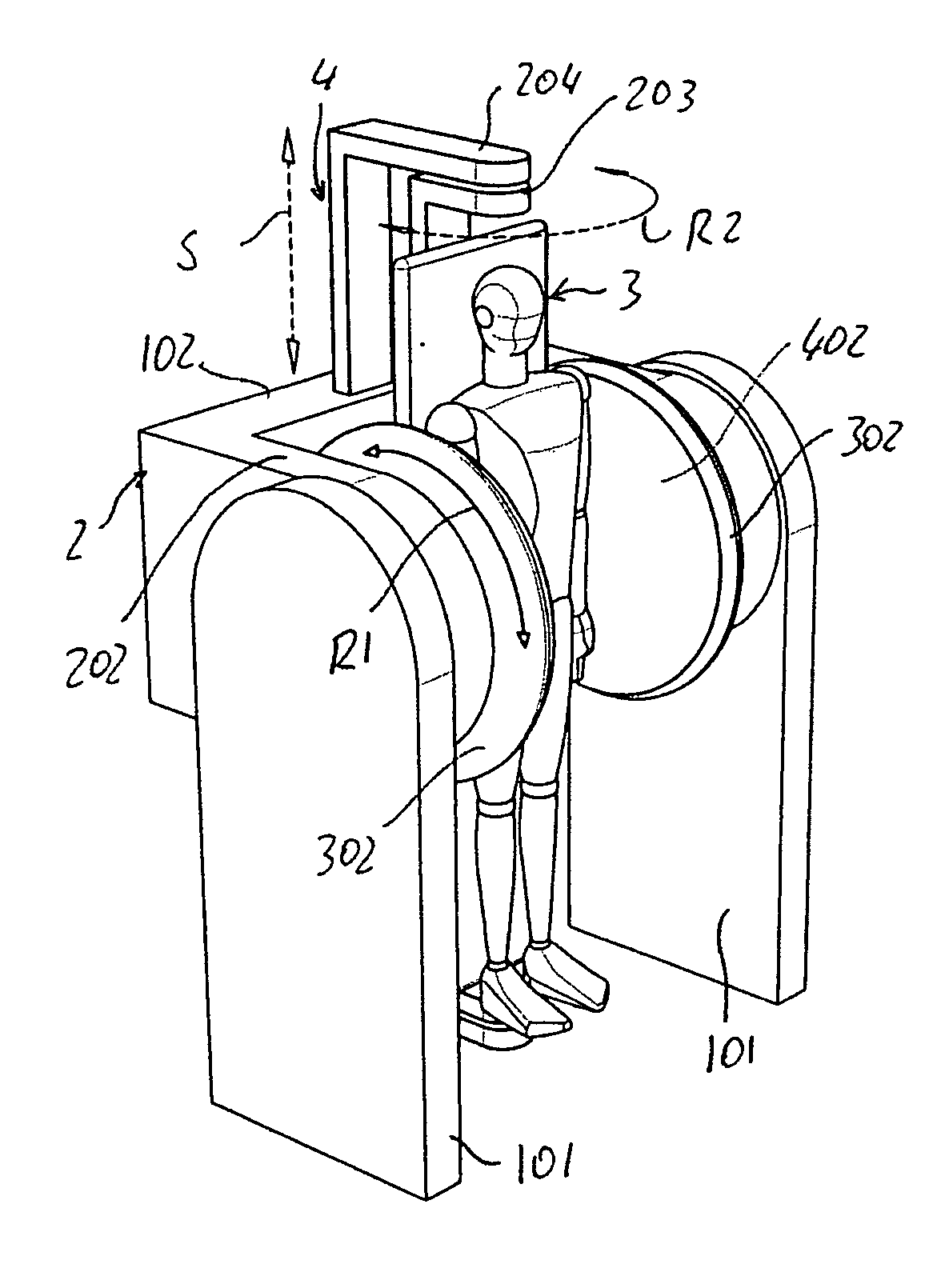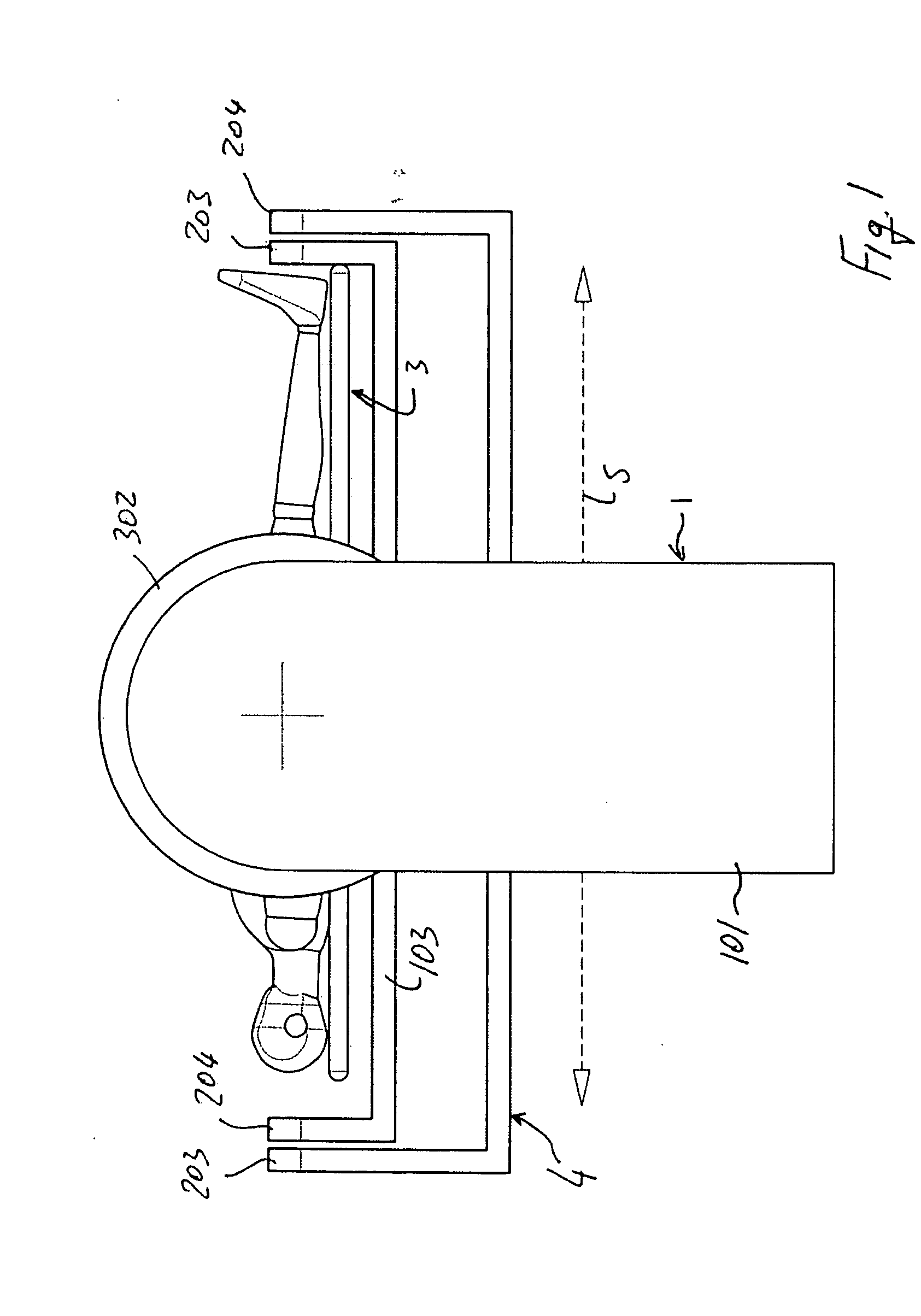Magnetic resonance imaging apparatus
a magnetic resonance imaging and apparatus technology, applied in the field of magnetic resonance imaging apparatus, can solve the problems of inability or at least high disagreeable, unfavorable patient positioning devices, and inability to clearly show results or negatives, and achieve the effect of small magnetic structur
- Summary
- Abstract
- Description
- Claims
- Application Information
AI Technical Summary
Benefits of technology
Problems solved by technology
Method used
Image
Examples
Embodiment Construction
[0203] An embodiment of an MRI imaging apparatus according to the present invention is schematically illustrated in FIGS. 1 to 9.
[0204] The MRI apparatus comprises a supporting basement 1 which is formed by two parallel vertical walls 101 which are spaced apart one from the other. Between the two vertical walls 101 a magnetic structure 2 is provided. The magnetic structure 2 is formed by an U-shaped yoke which is supported by the basement 1 between the two vertical walls 101. The U shaped yoke has a central transverse branch 102 and two lateral parallel branches 202. The central branch 102 is oriented horizontally and transversely to the two vertical walls of the supporting basement 1 and connects the two lateral branches 202 which lay in planes parallel to the two opposite vertical walls 101 of the supporting basement 1. At its the free end each lateral branch 202 of the U-shaped yoke bears a magnetic pole 302. The two magnetic poles are facing each other, being spaced apart one f...
PUM
 Login to View More
Login to View More Abstract
Description
Claims
Application Information
 Login to View More
Login to View More - R&D
- Intellectual Property
- Life Sciences
- Materials
- Tech Scout
- Unparalleled Data Quality
- Higher Quality Content
- 60% Fewer Hallucinations
Browse by: Latest US Patents, China's latest patents, Technical Efficacy Thesaurus, Application Domain, Technology Topic, Popular Technical Reports.
© 2025 PatSnap. All rights reserved.Legal|Privacy policy|Modern Slavery Act Transparency Statement|Sitemap|About US| Contact US: help@patsnap.com



